Deaths through opioid use in the U.S. keep rising, and research continues to try to find ways to solve it. So many lives suffer the effects of opioid abuse, and two medicines hold the line against its worst effects: Naltrexone and Naloxone. Are you aware of these treatments, as well as what they can do for those in the worst throes of withdrawal?
Read on to learn more about what the different uses are when it comes to Naltrexone vs. Naloxone. As you learn more, you can discover how they might help those in your life, as well as what we can offer to make treatment easier.
Similarities Between Naltrexone and Naloxone
Both of these chemicals are in use by addiction recovery centers. Health providers also often use them in the fight against overdose and addiction.
They both act as opioid receptor antagonists. This means they block neurotransmitters, the parts of the body that detect and react to the presence of opioids in the body.
These neurotransmitters, when activated, can have many addictive effects. These include:
- Euphoria
- Analgesia
- Disassociation
- Hallucinations
Their activation can also have several negative effects. These are a small example of the reason opioids are dangerous chemicals:
- Respiratory depression
- Cough suppression
- Constipation
- Dysphoria
For these reasons, Naltrexone and Naloxone’s neurotransmitter-blocking abilities can often save lives.
Initial Differences Between Naltrexone and Naloxone
Doctors often prescribe Naltrexone for long-term addiction treatment programs. They are a part of medication-assisted treatment (MAT) programs. Combined with other treatments, these help increase the likelihood of MAT success.
Chemical Mechanisms
Both these chemicals bind to opioid receptors, much like opioids themselves. They can even displace existing opioid chemicals already attached to the brain. The difference between the two, though, is that Naloxone is faster-acting.
People use Naloxone in emergencies, where an overdose may already be in progress, stopping the worst effects of an opioid.
Naltrexone, instead, sticks around for longer. It thus offers protection against the effects of opioids to a lower level over an extended period. This can prevent feelings like cravings from interfering with the treatment of addiction.
Application Methods
Due to Naloxone’s use as an emergency overdose treatment and prevention method, first responders are usually the ones to use it on others. They will administer it via a nasal spray or intramuscular injection to ensure fast uptake.
Naltrexone instead exists as an oral medication or a long-term injection. The oral form of this drug is convenient for people undertaking a daily regimen who may want the flexibility of taking it at home.
The injectable is instead used once each month and is useful for those who may have difficulty with daily oral medication for any reason. For example, when people are unlikely to remain in one place, are likely to have medication stolen, or wish for greater privacy.
Medication Considerations
Both these drugs have common interactions. As such, ensure you perform a medication review alongside your healthcare provider. This will identify potential issues you should be careful of.
Both Naltrexone and Naloxone have a useful interaction with opioids. If the drugs are in your system, any opioids you take will be less effective. It is unlikely you will receive them while using these medications, though.
They are also dangerous to use alongside liver medication. As both are metabolized through the liver, medications that may impair liver function will lead to them being in your system for longer.
Other Naltrexone Interactions
Besides the above, Naltrexone can also reduce some of the more enjoyable feelings of alcohol. This has led to its occasional use in alcohol addiction therapy. However, you should not use it for this without medical supervision.
Side Effects of Naltrexone
Some people have reported feelings of nausea or gastrointestinal discomfort after taking Naltrexone. These often diminish with time.
Long-term side effects also include the possibility of liver toxicity. Because of this, you should ensure you work with a healthcare professional while using this drug.
Side Effects of Naloxone
As Naloxone has such a rapid effect on the body, it can lead to opioid withdrawal symptoms soon after its use. These may include:
- Nausea
- Vomiting
- Anxiety
- Increased heart rate
These are rarely life-threatening, though, and usually do not last long.
Suitability for Different Treatments
Naltrexone use and Naloxone dosing are important for different reasons. They depend on the individual’s goals in therapy or the context in which you want to slow the impact of opioids on their system.
When Would You Use Naltrexone Over Naloxone?
Naltrexone is preferable when someone is looking to start a process of stable recovery from opioid or alcohol addiction. It works well as part of a long-term strategy for maintaining abstinence from the chemicals in question. Due to how it binds with the brain’s receptors, it can both reduce cravings as well as help reinforce any healthy habits the sufferer tries to build up.
You would also tend to use Naltrexone instead of Naloxone after surgery, where the treatment has demanded the use of an opioid. This will help the person recover from the effects of such a drug faster.
In some cases, a newborn may receive Naltrexone. This will occur if a pregnant person received opioids during the birthing process, or if they used them for any other reason.
When Would You Use Naloxone Over Naltrexone?
The drug is best used in emergencies to prevent a life-threatening overdose due to opioids. It can reverse the effects of the drug by removing and replacing existing opioid bindings.
This ensures the brain’s response to opioids diminishes fast. Thus, it prevents the common dangers of overdosing on opioids such as respiratory depression.
Experts in When to Use Naltrexone vs. Naloxone
After unlocking the secrets of which is the better option of Naltrexone vs. Naloxone, you might want to know more about who uses them. Places like Recovery Delivered work with those suffering from addiction. They offer treatment to help people during such difficult times, providing ways to help someone try to get back the life they once had.
If you or someone you know is suffering from opioid misuse, download our app and learn more about our treatments today. We can help you understand the journey that comes after addiction, as well as offer help on the road ahead.


